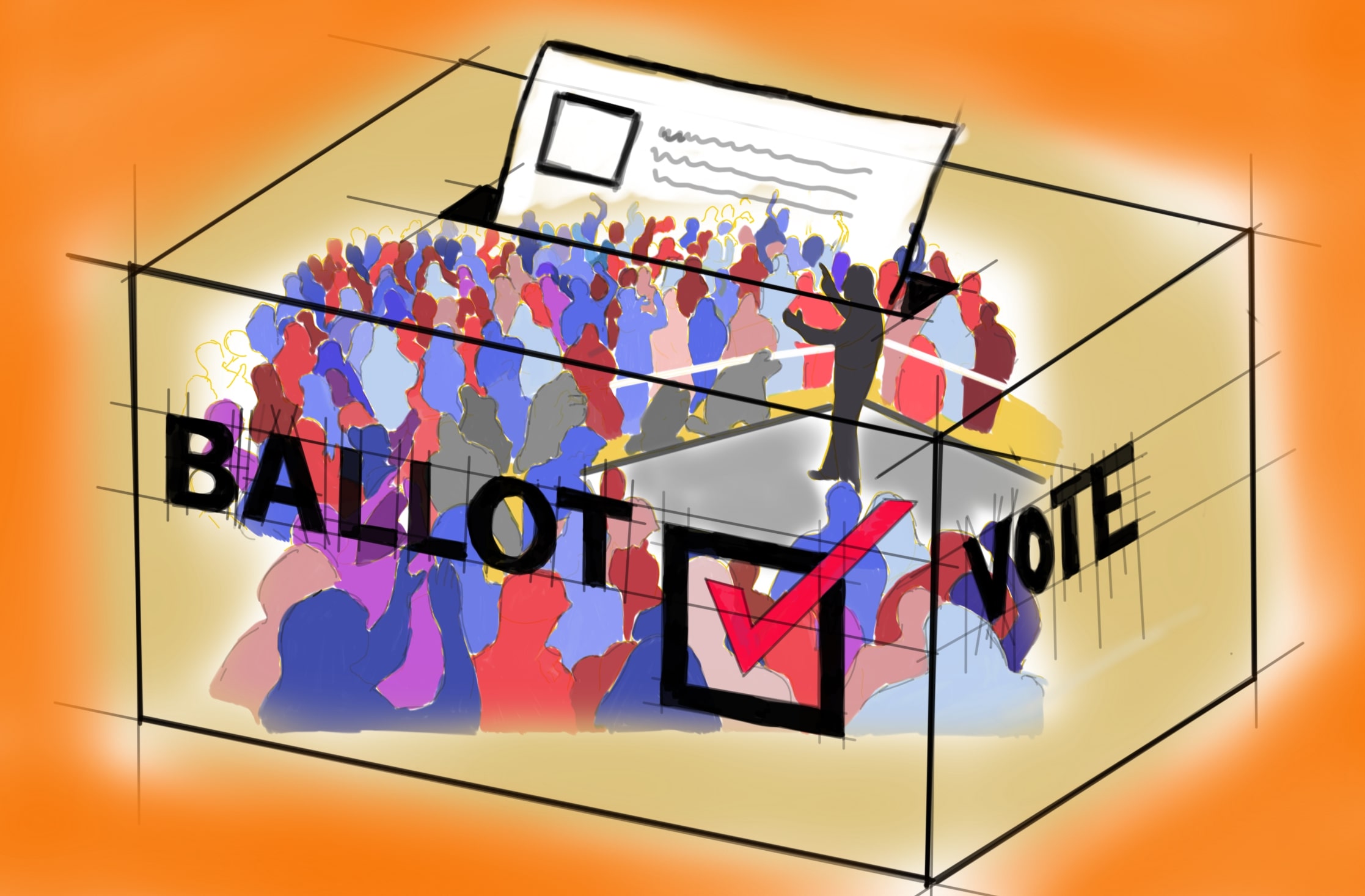A guide to the coming U.S. primary elections process

(Vaibhavi Patankar/Daily Bruin)

By Isabella Klesmith
Feb. 2, 2020 5:51 p.m.
Primary season begins tomorrow in Iowa and continues in the coming months as voters decide which candidates will proceed to the general election. But with a process as intricate as the U.S. political system, primary elections can leave us feeling confused.
Elections are said to be the heart of our democracy, and the presidential election is considered by many to be the most important one. So how do political parties thin the vast field of potential candidates for the most coveted job in the country before November? They use primary elections.
On Feb. 3, Iowa will be the first state to select the delegates that will later nominate Republican and Democratic presidential candidates at their national party conventions later this year. In the coming months, each state government or party will hold either an election or a caucus to determine who will represent the major parties in the upcoming presidential election.
Iowa has been the first state to hold their caucus each election year since 1972. The early start was initially implemented in order to give the state ample time to conduct their relatively complicated caucus process.
Today, however, many believe that Iowa chooses to maintain their status as the first state to vote in order to increase their national importance. As the first state to vote, Iowa receives a disproportionate amount of attention from both the candidates and the media.
As a critical part of our country’s electoral process, it is important that we understand how these primary elections function, as well as how to get involved.
The United States constitution requires that a candidate obtain a majority of the electoral votes to become President. As a result, it is prudent for the major political parties to rally all of their support behind one candidate so as not to divide their supporters’ votes. Primaries and caucuses are a way for these parties to select the candidate that is most likely to win in the November election.
Whether a state holds a primary or caucus depends on who controls and funds the process – either the state government or the state party. State governments organize primaries, while state parties conduct caucuses. Both options serve the same function. However, they vary greatly in their approach.
At a caucus, participants actively campaign for their preferred candidate to convince other party members to join their faction. People show their support for a certain candidate by standing in a group with other supporters. When a candidate’s supporters fall below a certain number, the candidate is eliminated.
In the end, the number of people supporting each candidate determines which delegates will be sent from that precinct to the state party conventions. At the state party conventions, these delegates will in turn elect national delegates according to the caucus results.
Primary elections function more like a conventional election, where people simply vote for their preferred candidate. The percentage of the vote a candidate receives determines how many delegates are sent to vote for them at the national convention.
In a closed primary, voters must be registered with either the Republican or Democratic party in order to vote. States with open primaries permit voters that are not registered with a party to decide whether to vote in the Democratic or Republican primary election. There are also many states with mixed systems, that allow for some flexibility but not complete openness, including New York, Massachusetts and New Hampshire, among others.
In most states, candidates receive a number of delegates proportional to the percentage of the vote they won. Candidates must reach a certain threshold, usually either 15% or 20% of the vote, in order to be awarded delegates.
Some states, including Florida, Ohio, Montana, New Jersey, South Dakota, Arizona, Nebraska and Delaware, have winner-take-all Republican primaries. In these elections, whichever candidate has the most votes wins all of that state’s delegates.
Unpledged delegates, who are usually party leaders, also complicate the manner in which candidates are selected. These superdelegates are not required to vote for the candidate that won in their state. However, since the creation of superdelegates in 1984, they have never altered the outcome of a primary election, opting to align with the voters in their respective states.
Iowa’s Republican and Democratic parties will hold their caucuses on Feb. 3. As the first state to select their preferred candidates, many believe that these results influence primary elections and caucuses across the country. If, for example, one candidate does worse than expected in Iowa, their supporters may choose to vote for a candidate that has a better chance to win nationwide.
New Hampshire’s primaries, which take place Feb. 11, are similarly believed to impact candidates’ future successes.
Although Iowa and New Hampshire receive increased media attention as a result of their early dates, demographic differences mean that these states are not always accurate indicators of national sentiment and future candidate performance in other states.
These primary elections and caucuses culminate in the national party conventions, where the delegates officially cast their votes for their candidates. Today these events are largely ceremonial, as the constant tracking of state primary elections and caucuses ensures that we know which candidate won the party’s nomination long before the day of the convention.
The California primaries will take place on March 3. California has the most delegates out of any state and thus wields considerable influence over which candidates are nominated.
The California Republican primary election will be a closed primary, where delegates will be proportionality distributed to candidates that receive over 20% of the vote. However, the election becomes winner-take-all if a candidate wins over 50% of the vote.
The California Democratic party allows voters registered as Democratic as well as those with no party preference to vote in their primary election. Candidates that receive over 15% of the vote are awarded a proportional number of delegates.
Regardless of the state and number of delegates, political participation among college students and young people is becoming increasingly important as they become a larger percentage of the electorate. In both the 2016 and 2018 elections, these younger generations outvoted Baby Boomers and older generations who previously dominated the polls.
Students can get involved by registering to vote, checking requirements for party membership in their state, and paying attention to these elections as they unfold.
As we delve into the 2020 election cycle, we will surely experience the highs and lows that inevitably accompany every major election year.

